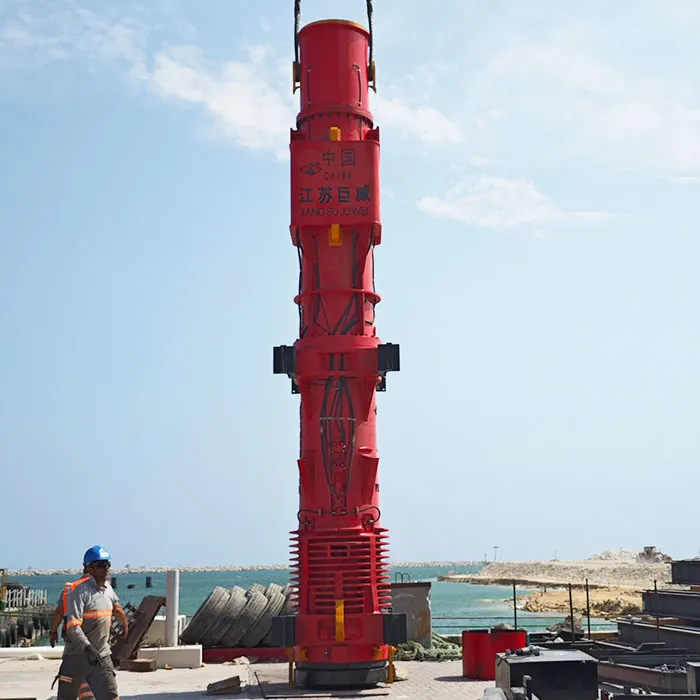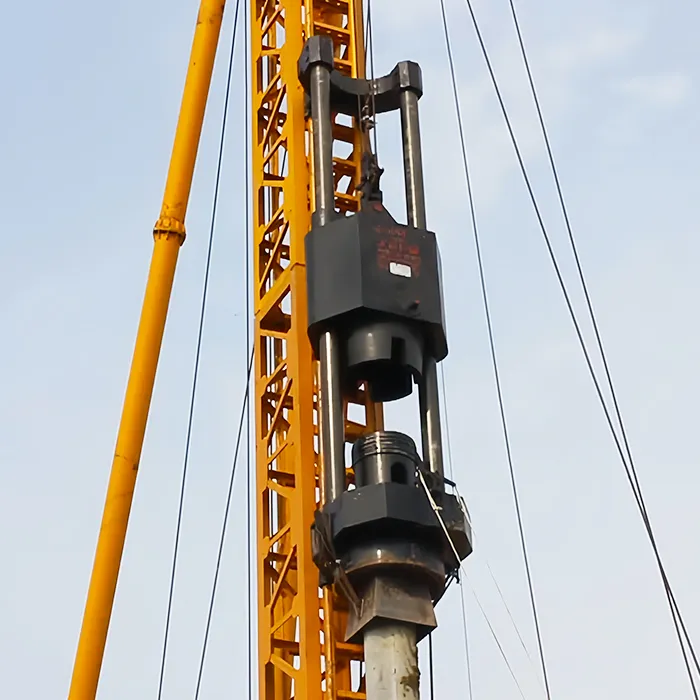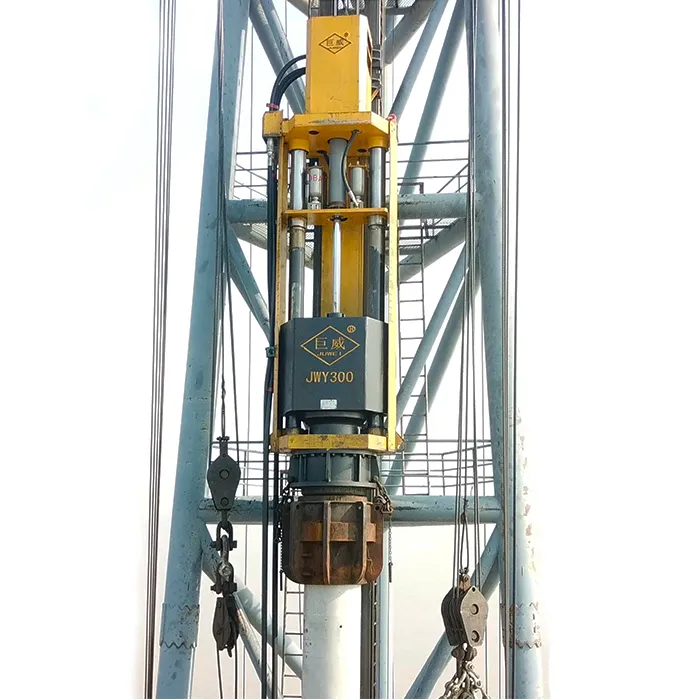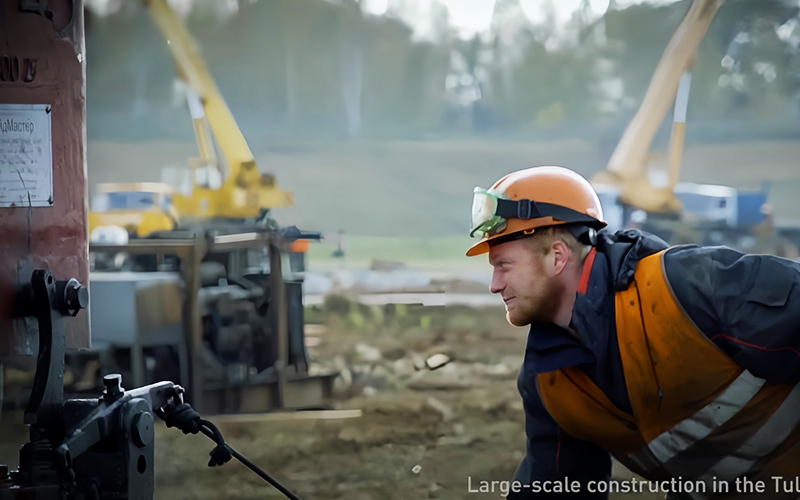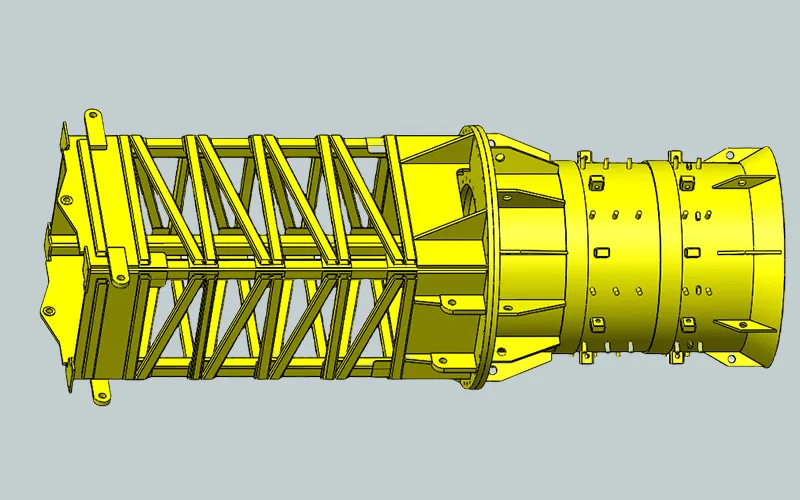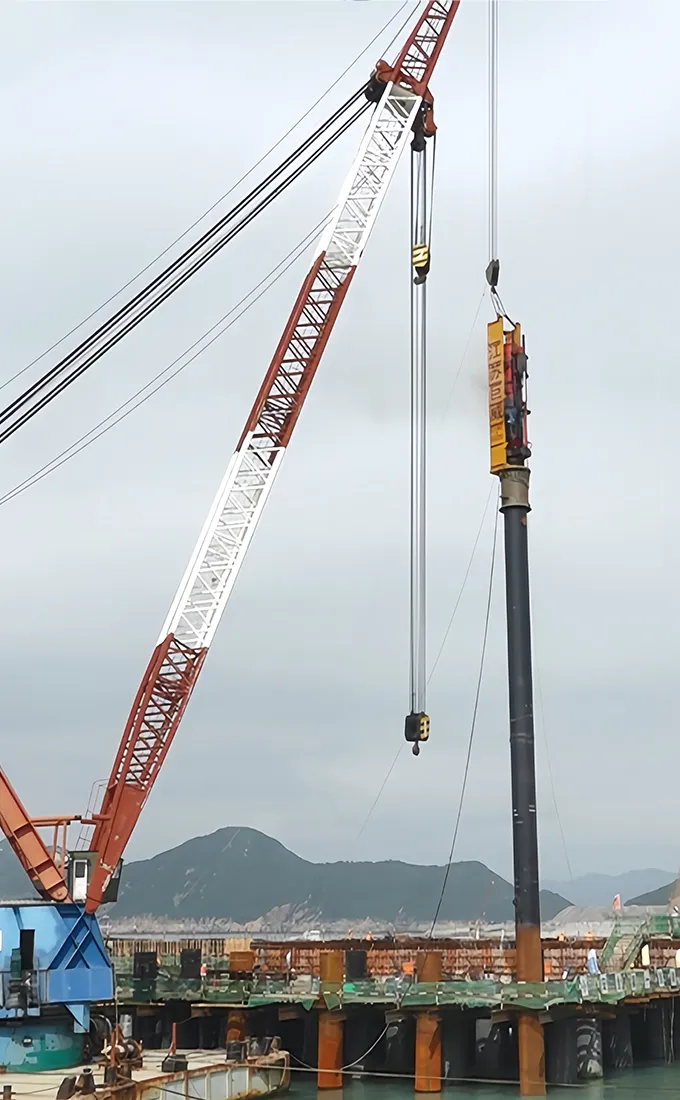Choosing right deep foundation piles is key important for construction. Foundation pile types can affect the safety, durability, and cost-effectiveness of the structural foundation. What types of foundation piles are available for selection? How to choose? In follwing, we will explore various types of piles, advantages and disadvantages, and the factors that influence their selection.
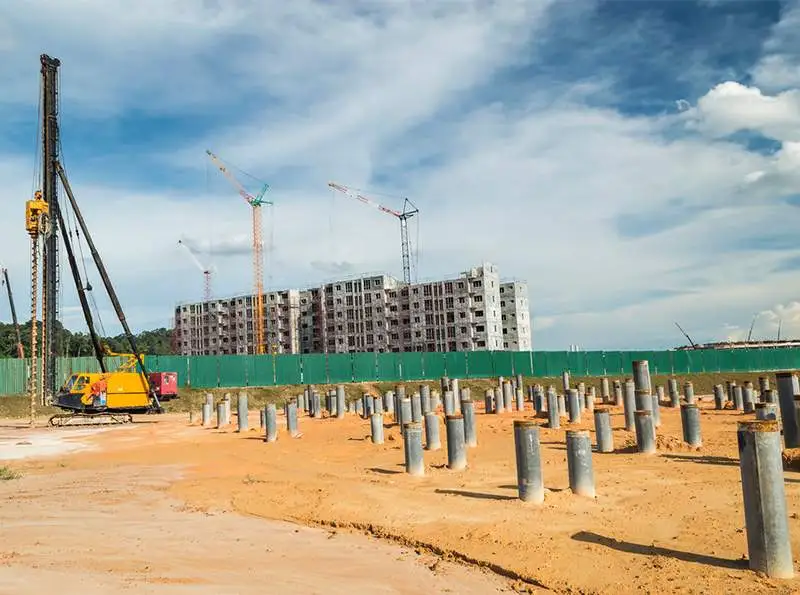
Understand pile foundation
Pile foundation is composed of slender structural components, which are called piles. Use pile driving equipment to drive these piles into the ground to support the weight of the structure. Foundation piles transfer loads from the structure to deeper and more stable soil or rock layers.
Foundation pile types has: end-bearing piles and friction piles.
End bearing piles transfer the load directly to the rock or soil below. Friction piles rely on the friction between the pile surface and the surrounding soil to support the structure.
Foundation piles are classified according to their materials: concrete piles, steel piles, wooden piles, and composite material piles. Each material has its own characteristics, making it suitable for different application scenarios.
Piles for foundation can be divided into circular piles, square piles, H-shaped piles, sheet piles according to their shapes.
Therefore, specific project requirements need to be evaluated to ensure the selection of the most effective pile type.
Foundation pile types in construction
1. Concrete piles
Concrete piles are renowned for their strength and durability. Therefore, it is widely used in building foundation construction. There are two types of concrete piles: precast and on-site casting.
Prefabricated concrete piles: manufactured in the manufacturer’s factory and transported to the construction site. Prefabricated concrete piles are usually more uniform. It can be produced under controllable conditions to minimize the risk of defects.
Cast-in-place piles: It’s poured directly into the ground at the construction site. The piles are manufactured in any shape and size. This allows customizing the piles to the project requirements.
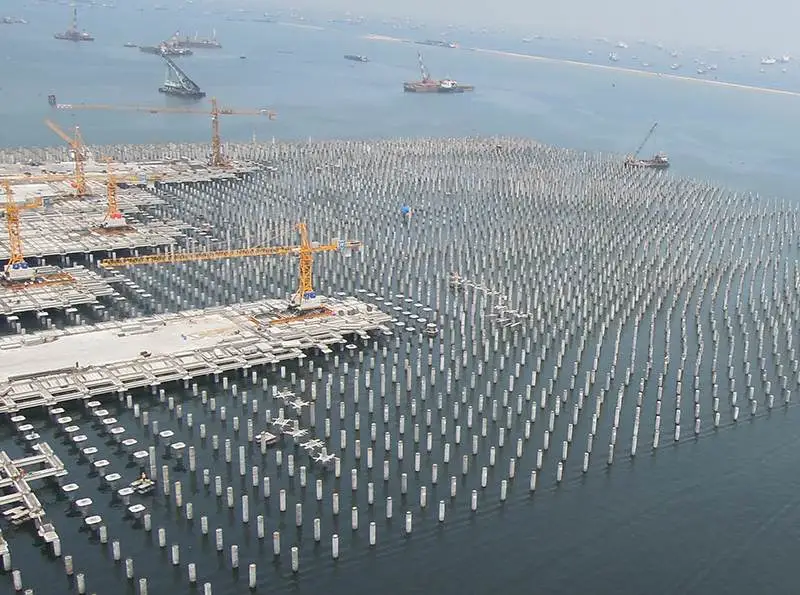
Advantages:
load capacity is high: Concrete piles have inherent strength and can support heavy structures.
Corrosion and insect resistance: Unlike wood, concrete is not affected by pests and moisture.
Design versatility: Concrete can be molded into various shapes and sizes to accommodate different projects.
Disadvantages:
High cost: Compared to other types, prefabricated piles have higher upfront costs due to manufacturing and transportation.
Installation requires specialized equipment: The installation of concrete piles (especially precast piles) may require heavy machinery, which increases the overall project cost.
Concrete piles are often used in large projects, such as high-rise buildings, bridges, and marine structures, because of their strength and durability.
2. Steel piles
Steel piles are made of high-strength steel. Very suitable for heavy loads and challenging soil conditions. They can be classified into different categories, including:
H-type pile: wide-flange, used for deep foundation construction. It can effectively transfer the load to deep soil or rock.
Tubular Pile: Hollow steel pipe with empty space. Usually used in foundation construction that requires a large carrying capacity.
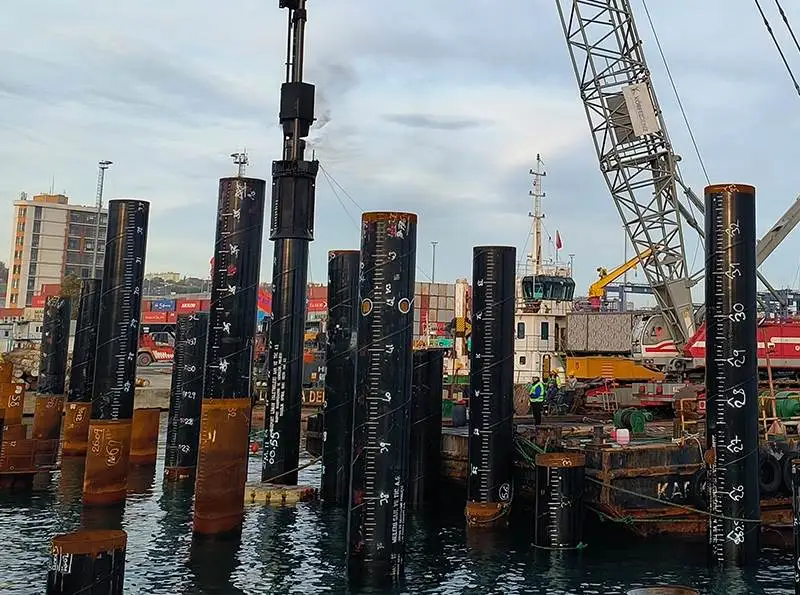
Advantages:
Excellent strength to weight ratio: Steel piles are lighter than concrete, but have similar or greater bearing capacity, making them easier to transport and install.
Quick installation process: Steel piles can be quickly driven into the ground, reducing project time.
Adapt to various soil conditions: Steel piles can perform well in both soft and hard soil conditions and have a wide range of applications.
Disadvantages:
Corrosion prone: Without appropriate protective coatings, steel will corrode over time, leading to structural damage.
High cost of protection: While steel piles are cost-effective, the cost of protective measures can add up, especially in corrosive environments.
Steel piles are often used in bridge construction, offshore platforms, and other platforms that require high load-bearing capacity.
3. Wooden or Timber Piles
They are made of processed wood and are typically used for lighter loads.
Advantage:
Better for small projects: Wooden piles are usually cheaper than concrete or steel, making them an ideal choice for residential or light commercial applications.
Environmental Protection: If purchased sustainably, wooden stakes can become an eco-friendly choice, reducing the carbon footprint of the project.
Easy to handle and install: Wood is lighter than concrete and steel, simplifying transportation and installation.
Disadvantages:
Perishable and insect infested: Wooden stakes need to be treated to resist moisture and pests. Their service life may also be inferior to that of concrete or steel.
Limited bearing capacity: Wooden piles are most suitable for lighter structures.
Wooden piles are commonly used in marine buildings such as personal residences and shipyards, which primarily consider environmental factors and lighter loads.
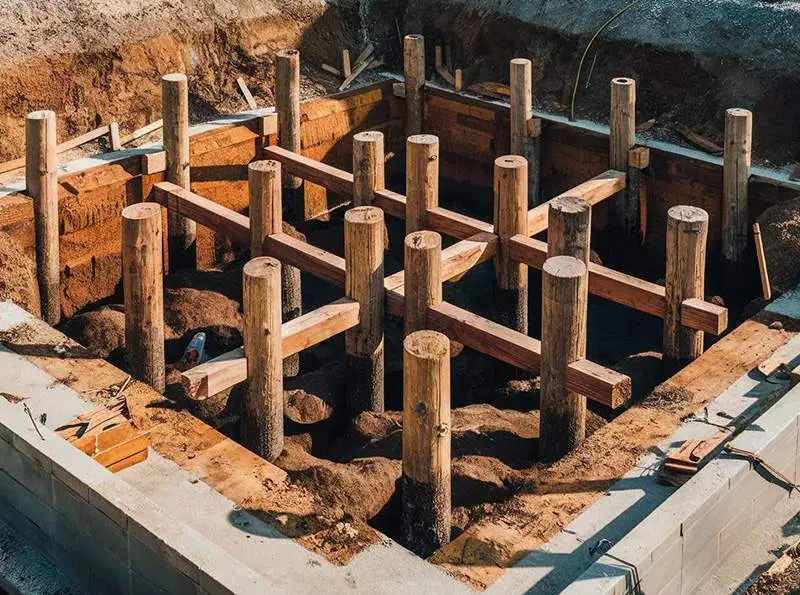
4. Composite piles
Composite piles combine materials such as concrete, steel, and wood, fully utilizing the advantages of each material.
Advantages:
Tailored to specific project requirements: Material combinations can be customized according to load requirements and environmental conditions.
Lightweight and easy to install: Many composite piles are designed to be lighter than traditional piles, simplifying operation and installation.
Provide corrosion resistance options: Some composite materials can be designed to withstand harsh environmental conditions and extend the service life of the foundation.
Disadvantages:
Design and construction are complex: the integration of multiple materials can complicate the design process, requiring careful planning and professional knowledge.
High initial cost: Using various materials and requiring specialized labor will increase the initial cost of composite piles.
5. Bored Piles
Bored piles are formed by drilling holes in the ground and then filling them with concrete. They are often used in urban areas where noise and vibration are minimized.
Advantages:
Less disruption to surrounding noise: The drilling process produces less noise and vibration than piling, making it suitable for projects in densely populated areas.
Installation in confined spaces: Bored piles can be placed in areas with limited access, providing greater design flexibility.
Suitable for a variety of soil conditions: Bored piles can be designed to accommodate different soil types, including unstable or challenging conditions.
Disadvantages:
The installation process is slower: the drilling and filling process takes more time than driving piles, which may affect the project schedule.
Drilling equipment leads to higher costs: the specialized equipment required for drilling piles will increase the total cost of the project.
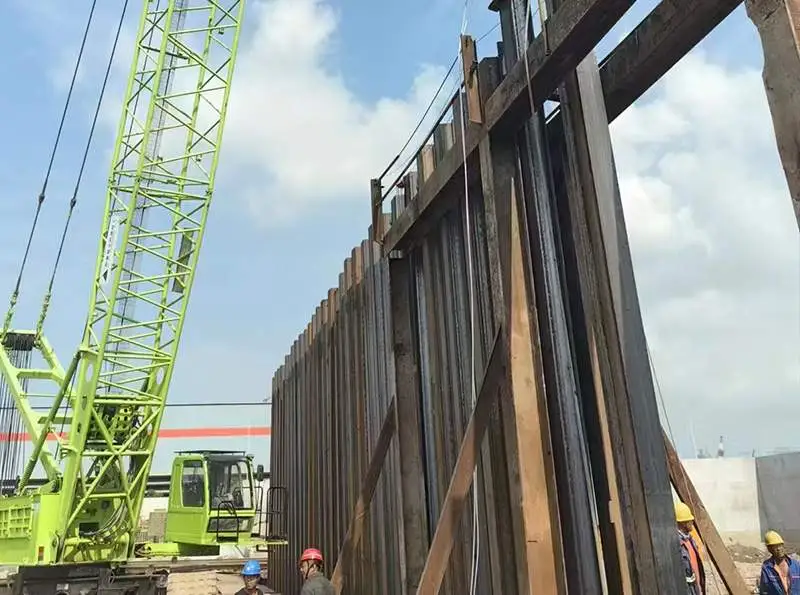
Factors affecting the selection of pile foundation
Soil conditions: The type and conditions of soil on the construction site have a significant impact on piles. Conducting soil testing analysis helps to select the most suitable pile type.
Soil characteristics need to be evaluated. For example, bearing capacity, soil type (cohesive and non cohesive), and groundwater level.
Load requirement: The weight and load distribution of the structure determine the bearing capacity of the pile. Analyze vertical and lateral loads to ensure stability.
Environmental conditions: Factors such as water level, corrosion potential, and seismic activity should be considered. Areas prone to flooding require the use of moisture resistant piles.
Project budget: Costs related to materials, equipment, and installation time need to be considered and cannot exceed the project budget. Need to balance initial costs with long-term performance and maintenance requirements.
Site limitations: Space constraints and site access can affect the selection of pile types and installation methods. In urban environments with limited space, it is necessary to choose pile types that reduce interference.
So choosing foundation piles requires various factors. We need to conduct a comprehensive site assessment. Structural engineers evaluate the load requirements of the structure.
The impact of pile foundation installation on environmental sustainability. Future maintenance costs. Test the piles before full installation
FAQ for Foundation Piles
Q1: What factors should be considered when choosing piles?
When selecting piles, please consider soil conditions, load requirements, environmental factors, budget constraints, and site limitations.
Q2: How to determine the appropriate pile type for my project?
Conduct soil testing and consult with structural engineers to evaluate the optimal pile type based on the specific needs of the project.
Q3: Can I use wood piles for large structures?
Wood piles are best for small, lighter structures. For larger structures, it is better to consider concrete or steel piles.
Q4: How much do different types of piles cost?
Costs can vary greatly depending on the material, installation method, and site conditions. Concrete and steel piles are generally more expensive than wood piles, but they have a higher load-bearing capacity and durability.
Conclusion
Choosing the appropriate pile type for your deep foundation construction is a key decision. It directly affects the success or failure of the project. By understanding various types of piles, their advantages and disadvantages, and the factors that affect selection. Select pile types that meet the project requirements.
Be sure to consult experienced professionals for thorough soil testing. Consider soil conditions, load requirements, environmental factors, and site limitations.
For inquiries about pile driving equipment in deep foundation construction. Please explore the resources of Juwei pile hammers here>. Find customized pile driving guidance tailored to your deep foundation pile driving needs.


